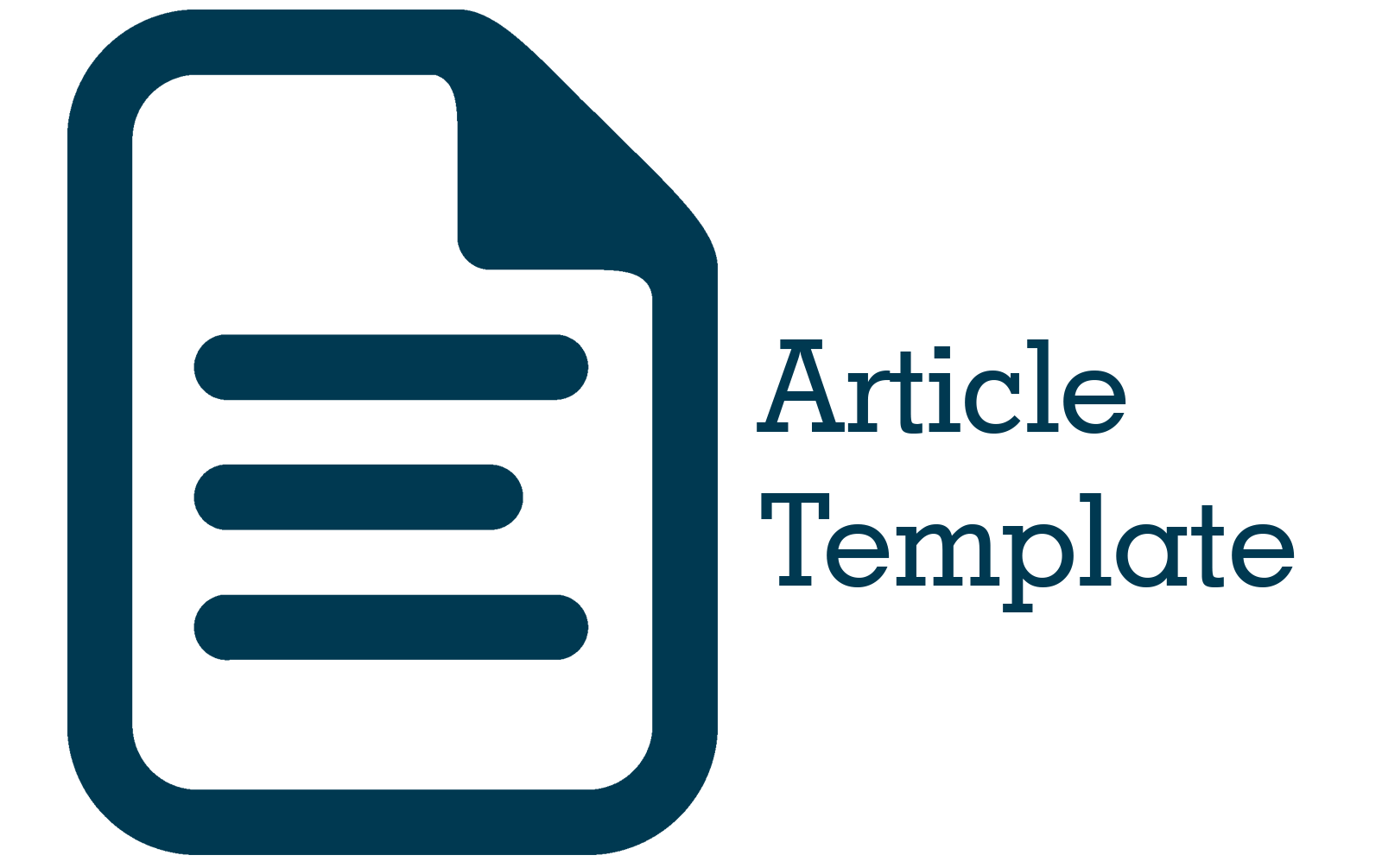Studi Literatur: Apakah Kalium dapat Mengontrol Tekanan Darah Pasien Hipertensi?
Abstract
Abstract. Hypertension is one of the major risk factors for cardiovascular disease, influenced by various factors, including electrolyte intake such as potassium. Potassium plays a role in blood pressure regulation through the mechanism of vasodilation, which involves the widening of blood vessels influenced by the hyperpolarization of endothelial cells and vascular smooth muscle. This process reduces intracellular calcium levels, decreases smooth muscle contraction, and increases blood flow, thereby contributing to blood pressure reduction. The method used was an analytical observational approach with a cross-sectional design. Respondents were interviewed regarding age, gender, and hypertension history, followed by blood pressure measurement using a sphygmomanometer. Potassium intake data were obtained through a 3x24-hour dietary recall over two weeks and analyzed by nutritionists using the Nutrisurvey application. The results of the Spearman rank correlation test showed a p-value < 0.05, indicating a significant relationship between potassium intake and blood pressure. This conclusion was drawn without considering hypertension medication use, physical activity, or sleep patterns.
Abstrak. Hipertensi merupakan salah satu faktor risiko utama penyakit kardiovaskular yang dipengaruhi oleh berbagai faktor, termasuk asupan elektrolit seperti kalium. Kalium berperan dalam regulasi tekanan darah melalui mekanisme vasodilatasi, yaitu pelebaran pembuluh darah yang dipengaruhi oleh hiperpolarisasi sel endotel dan otot polos vaskular. Proses ini mengurangi kadar kalsium intraseluler, menurunkan kontraksi otot polos, dan meningkatkan aliran darah, sehingga berkontribusi pada penurunan tekanan darah. Metode yang digunakan adalah pendekatan analitik observasional dengan desain cross-sectional. Responden di wawancarai mengenai usia, jenis kelamin, dan riwayat hipertensi dilanjutkan pemeriksaan tekanan darah menggunakan sphyngmomanometer. Data asupan kalium diperoleh melalui re-calling nutrisi 3x24 jam selama dua minggu kemudian dilakukan analis oleh ahli gizi menggunakan aplikasi Nutrisurvey. Hasil uji korelasi rank spearman diperoleh p-value <0,05 sehingga dapat disimpulkan adanya hubungan antara asupan kalium dengan tekanan darah tanpa mempertimbangkan konsumsi obat hipertensi, aktivitas fisik, dan pola tidur.
References
[2] Utari R, Sari N, Sari FE. Efektivitas Pendidikan Kesehatan perhadap Motivasi Diit Hipertensi Pada Lansia Hipertensi di Posyandu Lansia Desa Makarti Tulang Bawang Barat Tahun 2020. J Dunia Kesmas. 2021;10(1): page 136–44.
[3] Flack JM, Adekola B. Blood pressure and the new ACC/AHA hypertension guidelines. Trends Cardiovasc Med. 2020;30(3):page160–4.
[4] Alhamidi MHH, Utari S, Wati DA, Ayu RNS, Muharramah A. Hubungan Tingkat Kecukupan Natrium Dan Kalium Dengan Hipertensi Pada Lanjut Usia Unit Pelaksana Teknis Daerah Pelayanan Sosial Lanjut Usia. J Holist Heal Sci. 2022;6(1):35–41.
[5] Filippini T, Naska A, Kasdagli MI, Torres D, Lopes C, Carvalho C, et al. Potassium intake and blood pressure: A dose-response meta-analysis of randomized controlled trials. J Am Heart Assoc. 2020;9(12):9–11.
[6] Haddy FJ, Vanhoutte PM, Feletou M. Role of Potassium in Regulating Blood Flow and Blood Pressure. American Journal of Physiology-Regulatory, Integrative and Comparative Physiology. 2006 Mar;290(3):R546–52.
[7] Rossier B, Bochud M, Devuyst O. The hypertension pandemic: An evolutionary perspective. Physiol. 2017;32(2):112–9.
Mackenzie Samson M, Chief. Hypertension [Internet]. The Heart.org Medscape. 2024 [cited 2024 Mar 10]. Available from: https://emedicine.medscape.com/article/241381-overview?form=fpf
[8] Kotchen T. Developing Hypertension Guidelines: An Evolving Process. Am J Hypertens. 2014;27(6):765–72.
[9] Shier D, Butler J, Lewis R. Hole’s essential of human anatomy & physiology. Edisi ke-1. New York: Mc Graw Hill; 2015.
[10] Sherwood L. Pembuluh Darah dan Tekanan Darah. Glubka A, Crosby L, Oliveira L, penyunting Introduction to human physiology. Edisi ke-8. United States: United States: Brooks / Cole Cengange Learning; 2014. page. 362–70.
[11] Martini F, Nath J, Bartholomew M. Blood Vessels and Circulation. Dalam: Berriman L, Pille R, penyunting. Fundamentals of anatomy & physiology. Edisi ke-9. San Francisco: Pearson Education; 2012. page 717–31 .
[12] P2PTM Kemenkes RI. Apa Komplikasi berbahaya dari Hipertensi? [Internet]. Kemenkes. 2019 [cited 2024 Feb 2]. Available from: https://p2ptm.kemkes.go.id/infographic-p2ptm/hipertensi-penyakit-jantung-dan-pembuluh-darah/page/5/apa-komplikasi-berbahaya-dari-hipertensi
[13] Kusumastuty I, Widyani D, Wahyuni ES. Asupan Protein dan Kalium Berhubungan dengan Penurunan Tekanan Darah Pasien Hipertensi Rawat Jalan. Indones J Hum Nutr. 2016;3(1):19–28.
[14] Viera AJ, Wouk N. Potassium Disorders: Hypokalemia and Hyperkalemia [Internet]. National Library of Medicine. 2015 [cited 2024 Feb 2]. p. 487–95. Available from: https://pubmed.ncbi.nlm.nih.gov/26371733/
[15] Rofles S, Whitney E. Water and the Major Minerals. Dalam: Waer J, Penyunting. Understanding Nutrition. Edisi ke-15. Australia: Cengage Learning; 2013. 382–86 p.
[16] Moushumi S, Shamim S, Mohiuddin. Potassium [Internet]. National Library of Medicine. 2022 [cited 2024 Jan 18]. Available from: https://www.ncbi.nlm.nih.gov/books/NBK539791/
[17] Houston MC. The Importance of Potassium in Managing Hypertension. Curr Hypertens Rep. 2011 Aug;13(4):309–17.
[18] Aburto NJ, Hanson S, Gutierrez H, Hooper L, Elliott P, Cappuccio FP. Effect of Increased Potassium Intake on Cardiovascular Risk Factors and Disease: Systematic review and meta-analyses. BMJ. 2013 Apr 3;346(apr03 3):f1378.
[19] Drago J, Williams G, Lilly L. Hypertension. Taylor C,Weintraub A,Haffner J,Pathophysiology of Heart Disease: A collaborative project of medical students and faculty. Edisi Ke-6. Baltimore: Wolters Kluwer; 2011p. 311
[20] Mancia G, De Backer G, Dominiczak A, Cifkova R, Fagard R, Germano G. Guidelines for the Management of Arterial Hypertension: The Task Force for the Management of Arterial Hypertension of the European Society of Hypertension (ESH) and of the European Society of Cardiology (ESC). Eur Hear J. 2018;39(33):10–25.











